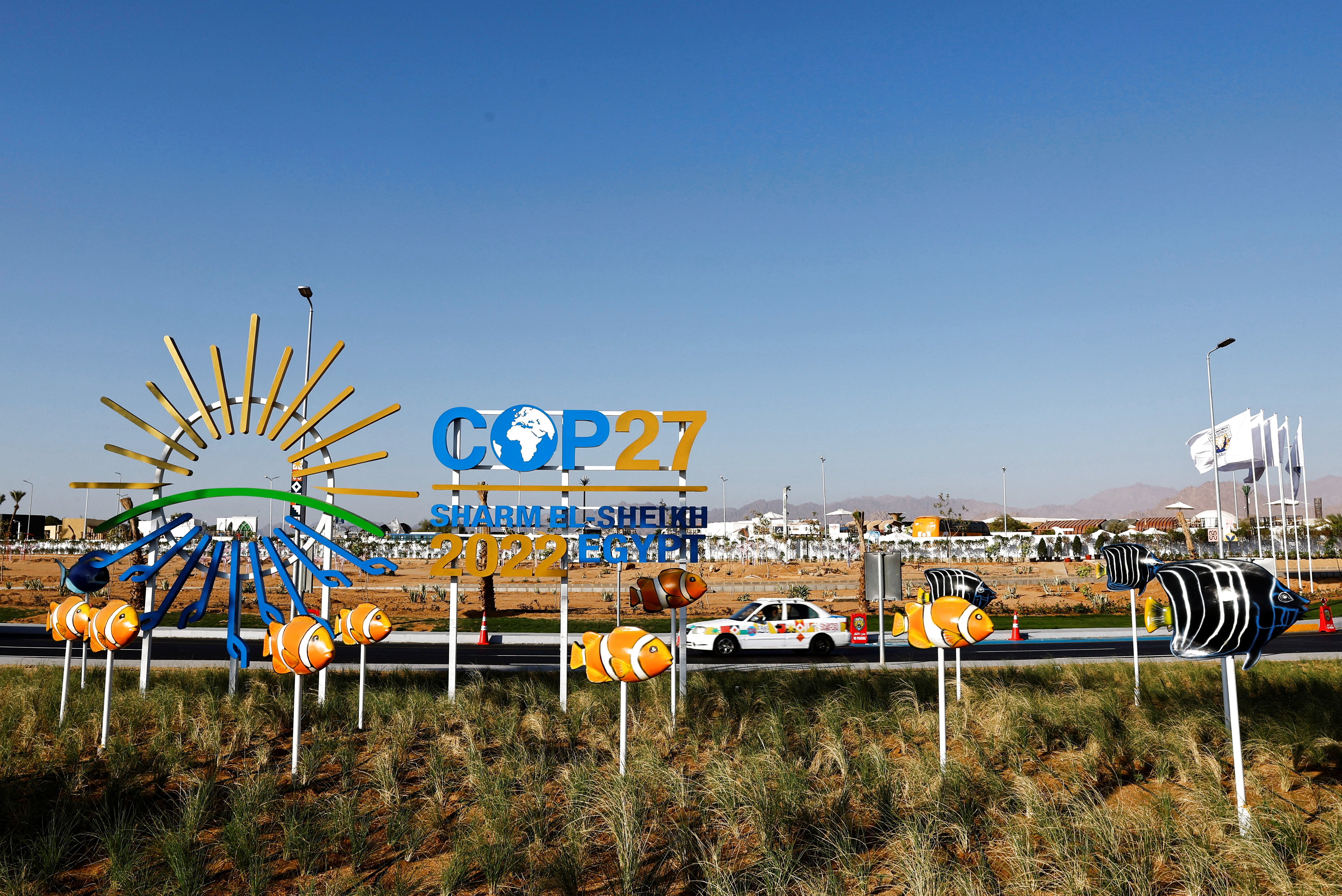
views
Nearly 200 countries are expected to clash at the United Nations climate conference in Egypt over whether rich countries should pay compensation to vulnerable states hit by climate-related disasters.
The COP27 summit comes after a year of natural disasters, including floods that killed over 1,700 people in Pakistan and droughts that wilted crops in China, Africa, and the western United States. This has heightened calls from developing countries for a special “Loss and Damage” fund.

The Delegates at the climate summit in Egypt agreed after late-night talks on Sunday to put the delicate issue of whether rich nations should compensate poor countries most vulnerable to climate change on the formal agenda for the first time, Reuters reported. For more than a decade, wealthy nations have rejected official discussions on what is referred to as loss and damage, or funds they provide to help poor countries cope with the consequences of global warming.
WHAT EXACTLY IS “LOSS AND DAMAGE”?
In U.N. The phrase “Loss and Damage” in climate talks refers to costs already incurred as a result of climate-related weather extremes or impacts, such as rising sea levels.
So far, climate funding has been focused on reducing carbon dioxide emissions in an effort to combat climate change, with roughly one-third of it going toward projects to assist communities in adapting to future impacts.
Loss and damage funding would be distinct, with the goal of compensating countries for costs that they cannot avoid or “adapt” to.

However, there is no consensus on what constitutes “loss and damage” in climate disasters, which can include damaged infrastructure and property as well as more difficult-to-value natural ecosystems or cultural assets such as burial grounds.
According to a June report by 55 vulnerable countries, their combined climate-related losses over the last two decades totaled about $525 billion, or about 20% of their total GDP. According to some estimates, such losses could reach $580 billion per year by 2030.
WHO IS RESPONSIBLE? WHO IS COMPENSATED?
These are extremely contentious issues.
Vulnerable countries and campaigners have argued that rich countries should pay for the majority of climate change caused by their historical emissions. Fearing spiralling liabilities, the United States and the European Union have resisted the argument.
If countries agree to establish a fund, they must work out details such as where the money will come from, how much wealthy countries will pay, and which countries or disasters will be compensated.

At last year’s United Nations climate talks, the EU and the US blocked a proposal to establish a fund, instead opting for a “dialogue” with no clear end goal. They have shown more willingness to discuss compensation at COP27 in the last month, but remain wary of creating a fund, Reuters reported.
Only Denmark and Scotland, as well as the Belgian region of Wallonia, have made small, symbolic funding commitments for loss and damage. Some existing United Nations and development bank funding does assist states experiencing loss and damage, though it is not officially designated for that purpose.
WHAT WILL TAKE PLACE AT COP27?
Developing countries have proposed including loss and damage on the summit agenda, which must be unanimously approved before the talks can begin.
Frustrated by the difficulties and delays in securing climate finance, developing and emerging economies have joined forces to demand the establishment of a loss and damage fund at COP27.
Among them are island nations such as the Maldives and Jamaica, as well as China, the world’s largest CO2 emitter, which has irritated some European officials who believe China should be providing climate finance rather than demanding it.
Different countries have proposed various designs for the fund. Even if COP27 produces an agreement to establish a fund, it could take several years before it is ready to distribute funds.
Some diplomats have proposed organising a “mosaic” of funding sources rather than a single central fund.
Another proposal from the Alliance of Small Island States is for COP27 to agree to establish a U.N.-hosted “response fund” to collect funds from various sources for disaster-affected countries.
The EU has proposed using existing international funds to address loss and damage rather than creating a new one, but some experts argue that issues such as long delays make those funds unsuitable for dealing with loss and damage.
Where India Stands
Developing countries such as India and small island nations have asked for a separate fund to address climate extremes caused by historical polluters in the West. Loss and damage refer to compensation for the effects of extreme weather events such as cyclones, droughts, and flooding, as well as slow-onset events such as sea-level rise and glacier retreat, a report by Moneycontrol states.
India, the world’s third largest emitter, is responsible for only 3% of historical emissions, the Indian Express reported.
India’s stance on the issue has been clear, the report stated. “COP27 should be a COP of Action, with key deliverables focusing on defining climate finance, adaptation outcomes, and loss and damage,” said environment minister Bhupender Yadav in a statement before departing for Egypt.
India will advocate for a strategy that addresses the needs of developing countries. Adaptation and loss and damage are two issues at the forefront of discussion, and progress on both must complement one another, according to the Indian delegation led by Yadav.
With Reuters inputs
Read all the Latest Explainers here


















Comments
0 comment